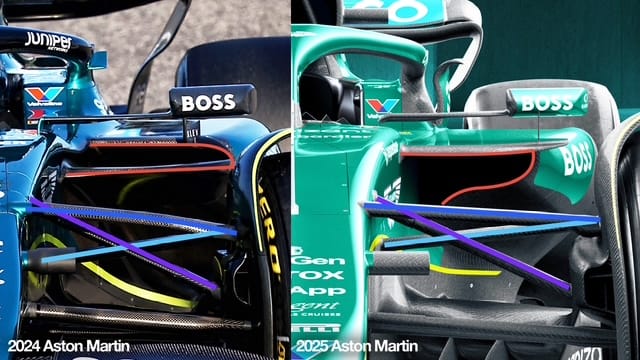With Adrian Newey being about a week away from ‘officially’ starting his new job with Aston Martin, the pressure is on the existing technical group to prove that they actually know what makes an F1 car tick.
It’s the fourth and last year of these current ground effect rules so it should be about packaging what has been learned over the last three years. No team should really have to rely on someone of Adrian’s experience coming in to give them direction on how to achieve that.
It's a different story for 2026 with new rules, new concepts, new ideas, new ways of understanding and new ways of working, so in reality that is what Adrian should be let loose on, with the 2025 project simply giving him an idea of where Aston Martin are strong and where it is weak.
The covers are off and the AMR25 is here for everyone to see, so let’s have a closer look and put together a few comparisons.
So as normal let’s be a bumble bee and try to find the fastest route from the front to the back without suffering from getting too many bruises, after all that’s what the airflow has to do.
Front wing
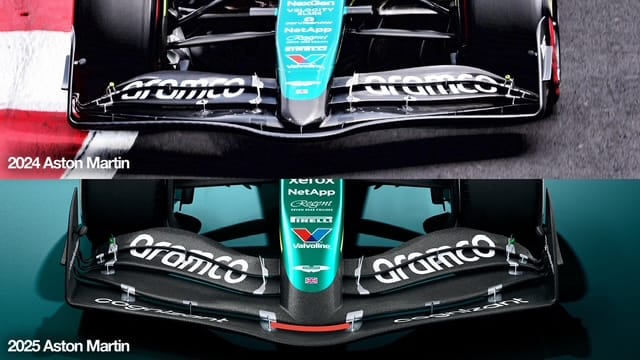
In its press release, Aston claims to have made a lot of changes to the front wing to help the front grip in low speed corners.
The comparison shots are from slightly different angles so somewhat exaggerate the differences. Yes the various element cord lengths have changed which can affect this characteristic but it’s always very difficult to predict slow-speed aerodynamic effects against high-speed aerodynamic effects, especially when rotational flexing comes into play, or at least until the flexi wing clampdown post-Spanish GP.
The nose is a bit bulkier but to counter Aston also retained the leading element to the nose slot gap (red highlight). This is something that I am in favour of as it improves the consistency of the airflow on the underside of the nose and in turn to the leading edge of the underfloor.
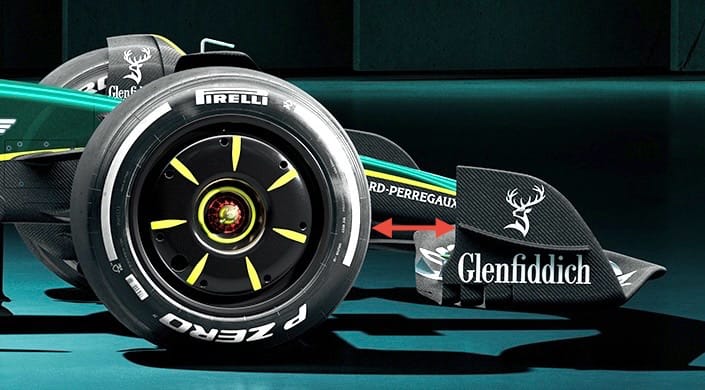
The gap between the front wheel and the trailing edge of the front wing endplate (red highlight) looks bigger than normal, it might just be an optical illusion but if it is it will increase outwash and potentially help the front wing performance when higher angles of steering lock are applied in slow corners.
Front suspension
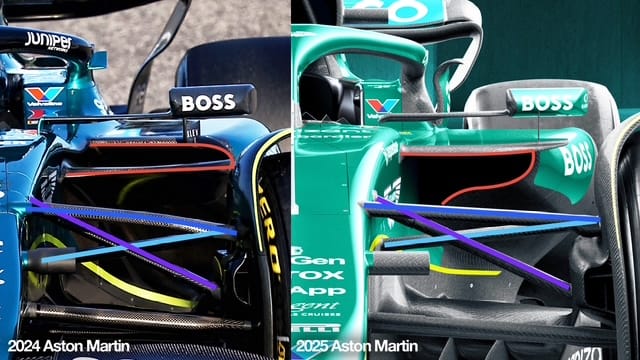
This is very similar to last year, I can't see any major differences in anti dive, top wishbone forward leg (dark blue highlight) and rearward leg (light blue highlight) unlike the new Ferrari, Aston also retains the pushrod driven suspension system (magenta highlight).
The radiator intake has changed (red highlight) which I have gone into detail below.
Radiator intake
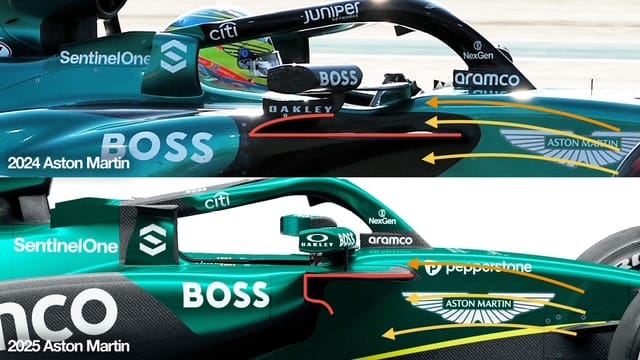
The radiator intake in comparison to the 2024 car has now got the Peaky Blinders hat brim' top surface over the inlet, most teams went to this solution to some degree last year but Aston Martin stuck with the older 'duck bill' style.
This new style of inlet (red highlight) is beneficial when you are running high angles of front wing, the top peak is roughly where the airflow separation point happens, below it is the wake from the underneath of the front wing (yellow arrows), above it is the flow that comes over the top of the front wing (orange arrow).
Interestingly the radiator opening appears to be a little bigger than it was previously. Most 2025 cars we've seen so far seem to have gone that way, perhaps everyone is expecting a very close season and they are preparing for more running in traffic.
Sidepod
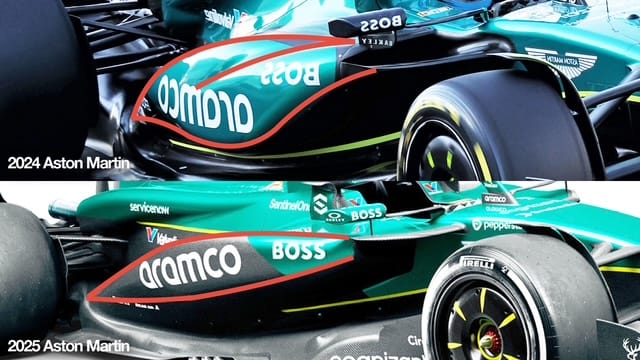
The surface profile of the sidepods are less complicated than last year's version. I have highlighted the main profile features in red, it has retained and exaggerated the sidepod top surface gulley.
The low pressure behind the central section of the car pulls this flow down through this gully (light blue highlight). What you need to be careful of is that the expansion rate increase of this gulley is consistent otherwise it would be very easy to induce airflow separation in the gulley where it gets narrower (yellow ellipse) to clear the exhaust system. If this happens it could reduce its effectiveness.
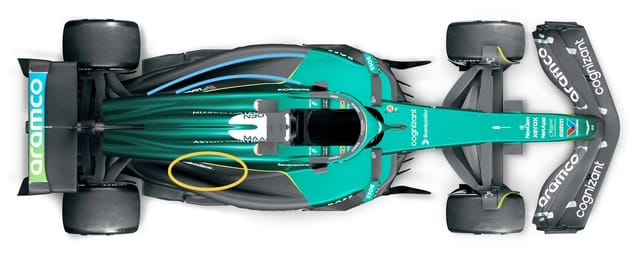
The airflow coming over the top surface of the sidepod (light blue arrows) is pulled downwards onto the centre of the car. The large body radius is in compliance with the regulations to minimise potential vortex generation off body fins etc.
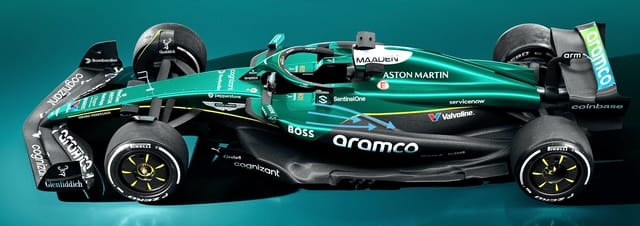
Rear suspension
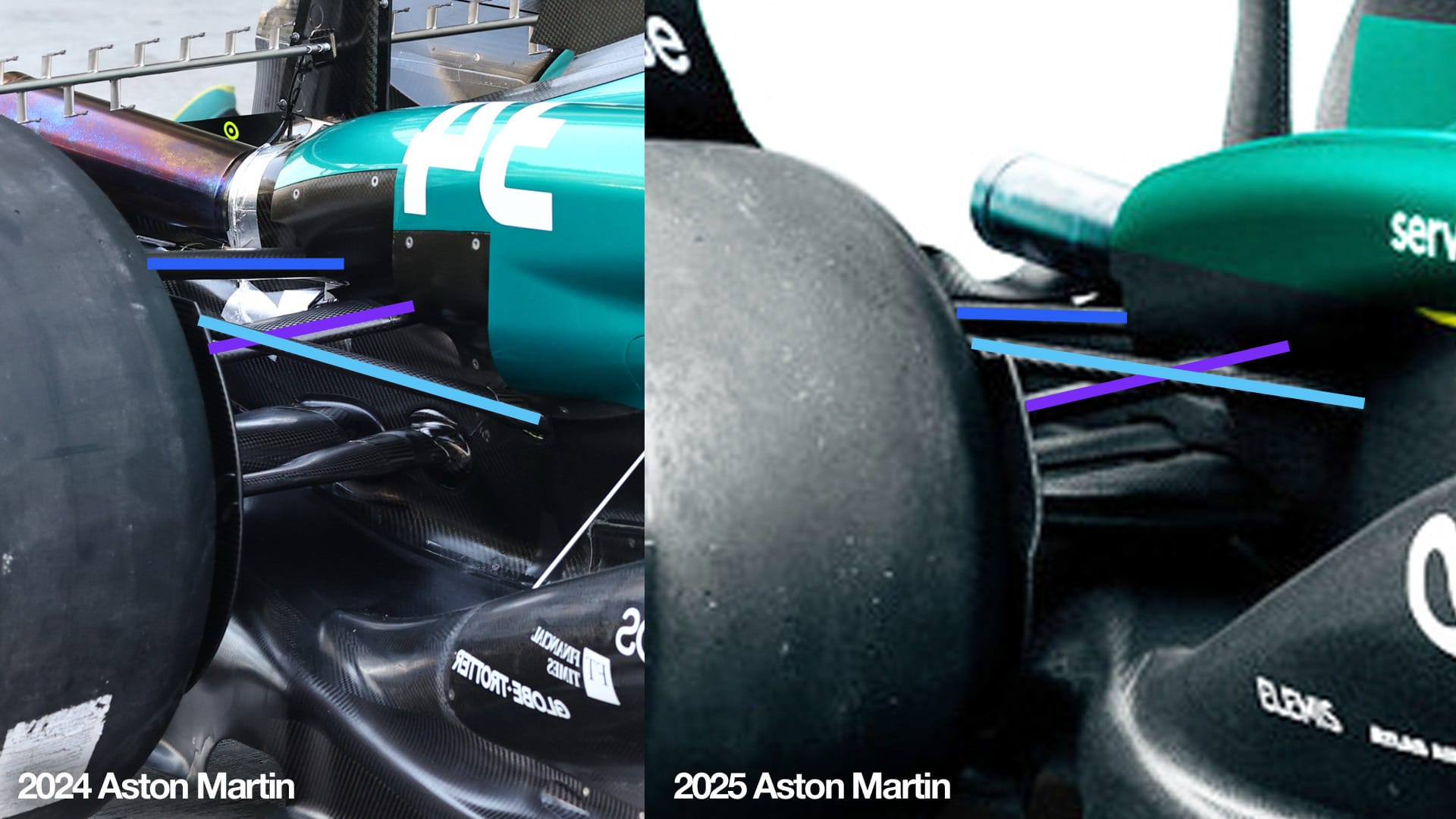
Aston uses the Mercedes transmission system and with it, I’m pretty sure most of the rear suspension layout.
Again I can’t see a big difference from last year in this comparison, it's still a very shallow angle pushrod operated system (magenta highlight). It may just be the angle of the picture but referencing it to the exhaust tail pipe angle it looks like Aston has gone for reduced anti-lift characteristics, top wishbone rear leg (dark blue highlight) and forward leg (light blue highlight).
Is this a preview of what Mercedes might be up to? We'll find out when the team reveals its W16 on Monday.
Engine cover
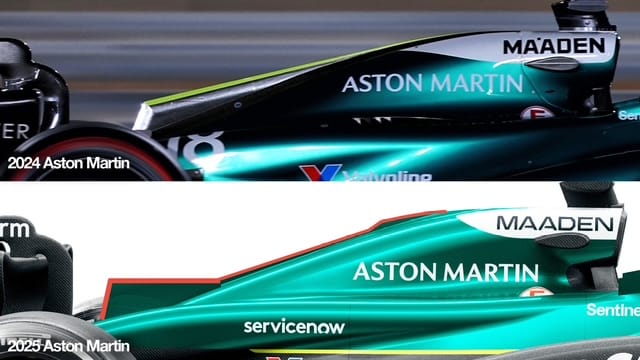
To increase the cooling exit area Aston has a trailing edge slot on the centre line of the engine cover and a fin in the middle of it, the regulations define the side view that you are required to have and this fin is to legalise this slot feature.
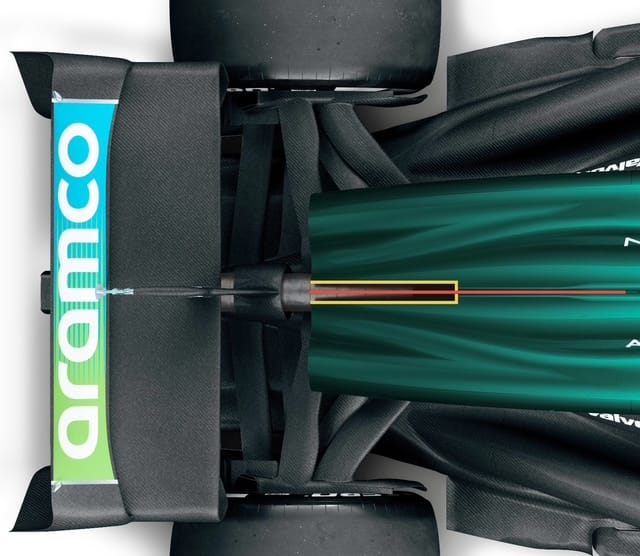
I have highlighted the fin in red and the cutout in yellow, it’s not a big exit area but it allows some of the hot air that has gone through whatever cooling is mounted high up to not interfere with the main sidepod cooling.
Rear wing
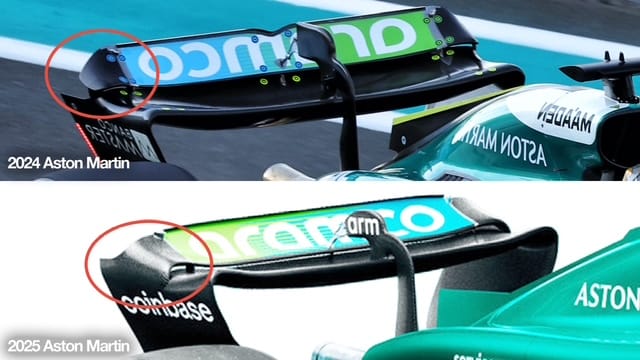
Again Aston has said in its press release that it has concentrated on getting more corner entry stability from the design of the rear wing.
In my book that’s the first principle that should come from any overall design, spook the driver on corner entry and it won’t take long before they're not a happy camper, and lose confidence and that will show up in the laptime very quickly.
The rear wing is a bolt-on component so we will see various configurations as the season unfolds but on this version, I have highlighted the change with a red ellipse.
From what we have seen from the other cars that have been released other teams have separated the rear flap, main plane and endplate as much as possible, it looks like Aston Martin has gone in the opposite direction.
Aston's 2024 performance slide
Just to get a handle on how last year unfolded this was Aston Martin's 2024 percentage performance deficit compared to whoever was fastest over each race weekend.
As can be seen, Aston started reasonably well but faded away, especially in the second and fourth quarters of the season. The number in brackets is where they were in the pecking order for that particular stint of races.

To be a contender for points regularly you need to be well within that one percent deficit over the complete season.
They started the season competitively but faded away, for potential podium positions you need to be within half a percentage deficit, that alone is no guarantee but from there on in you need a bit of luck.


